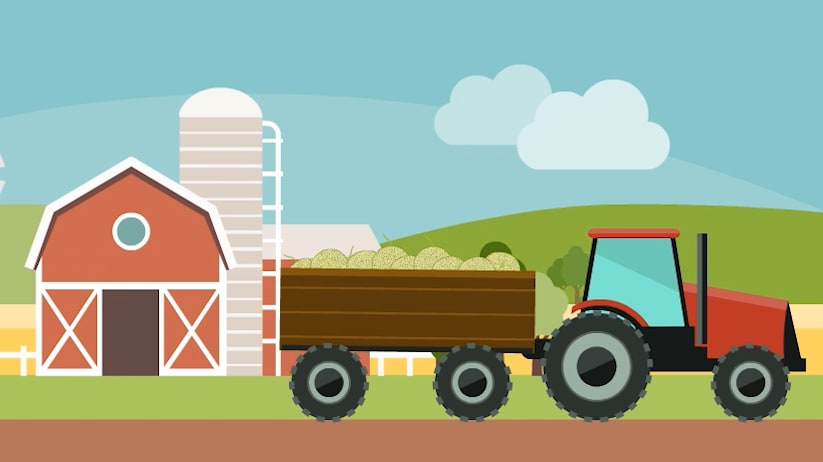What to know
Food goes through several steps from where it is grown or made to the dining table. We call these steps the food production chain. Contamination can occur at any point along the chain—during production, processing, distribution, or preparation.

Overview
Production

Production means raising the animals we use for food or growing the plants we harvest. Most food comes from domesticated animals and plants and is produced on farms or ranches. Some foods are caught or harvested from the wild, such as some fish, game, and mushrooms.
Healthy animals can have germs on or in their bodies. These germs can contaminate meat or poultry during slaughter and processing. Germs can also get on plants during the growing or harvesting process.
Examples of contamination in production
- Hens can pass on germs to an egg's yolk even before the egg is laid.
- If contaminated water is used for irrigation, fruits and vegetables can be contaminated before harvest.
Processing

Processing means changing animals or plants into the form we know and buy as food. Processing involves different steps for different kinds of foods. Milk is usually processed by pasteurization, and sometimes it is made into cheese or other products. For fruits and vegetables, processing can be as simple as washing and sorting, or it can involve trimming, slicing, or shredding. Nuts may be roasted, chopped, or ground (such as with peanut butter).
For animals, the first step of processing is slaughter. Meat and poultry may then be cut into pieces or ground. They may also be smoked, cooked, or frozen and may be combined with other ingredients to make foods like sausage or deli salads.
Examples of contamination in processing
- If contaminated water or ice is used to wash, pack, or chill fruits or vegetables, the contamination can spread to those items.
- During slaughter, germs from an animal's intestines or germs from an animal's hide or skin can get into the final meat or poultry product.
- If germs contaminate surfaces used for food processing, such as a processing line or storage bins, germs can spread to foods that touch those surfaces.
Distribution

Distribution means getting food from the farm or processing plant to the consumer or a food service facility like a restaurant, cafeteria, or hospital kitchen. This step might involve transporting foods just once, such as trucking produce from a farm to the local farmers' market. Or it might involve many stages. For instance, frozen hamburger patties might be trucked from a meat processing plant to a large supplier, stored for a few days in the supplier's warehouse, trucked again to a local distribution facility for a restaurant chain, and finally delivered to an individual restaurant.
Examples of contamination in distribution
- Refridgerated food left on a loading dock for a long time could reach temperatures that allow bacteria to grow.
- Fresh produce could be contaminated if it is loaded into a truck that was not cleaned after transporting animals or animal products.
Preparation

Preparation means getting the food ready to eat. This step may occur in the kitchen of a home, restaurant, or institution. It may involve following a complex recipe with many ingredients, simply heating and serving food on a plate, or just opening a package and eating the food.
Examples of contamination in preparation
- A sick food worker could spread germs when preparing food if they do not wash their hands carefully.
- Raw fruits and vegetables can get contaminated if they are sliced using the same cutting board or knife used to cut raw meat or poultry if the cutting board or knife wasn't washing in between.
- Contamination can occur if raw meat juices get on items that will not be cooked.
Everyone has a role to play in keeping food safe
Although contamination can occur at any point during the food production chain, the people involved at each point work to reduce this risk. People can take actions like cooking food thoroughly, inspecting food at several points in the production chain, storing food at safe temperatures, washing hands, and keeping food preparation areas clean.
